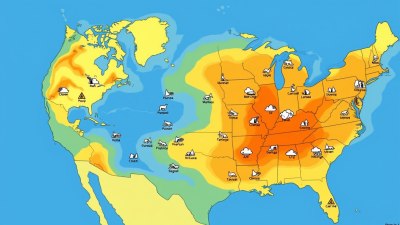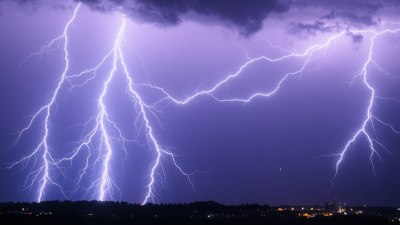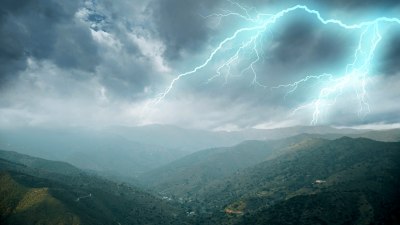Can Thunder Happen Without Lightning The Truth About Silent Storms
Explore the fascinating phenomenon of thunder occurring without lightning in silent storms, uncovering the truth behind this rare occurrence.

While thunder and lightning are often paired together in the minds of many, there are instances where thunder can occur without the presence of visible lightning. These phenomena are commonly referred to as 'silent storms.' Understanding this unusual relationship between thunder and lightning brings forth questions about the nature of storms and the atmospheric conditions required for their occurrence. In this article, we will delve into silent storms, exploring how they manifest and what makes them unique.
Understanding Thunder and Lightning
Thunder is the sound produced by the rapid expansion of air heated by a lightning discharge. This rapid expansion creates a shock wave that we perceive as sound. Lightning results from the discharge of electricity in the atmosphere, forming when there is a buildup of electrical charges inside a cloud. The classic image of a thunderstorm typically includes dark clouds, heavy rains, and dramatic bolts of lightning flashing across the sky.
The Relationship Between Thunder and Lightning
Typically, thunder accompanies lightning, and we often see the flash before hearing the rumble of thunder. This delay is due to the difference in the speed of light and the speed of sound; light travels faster than sound, resulting in a brief moment between witnessing a flash and hearing its thunder. However, the question remains: can thunder exist independently of lightning?
Defining Silent Storms
Silent storms occur under specific atmospheric conditions where thunder is audible, yet no lightning is perceived. These events can confuse observers, as they may associate thunder strictly with visible lightning strikes. Silent storms can be caused by several meteorological factors, including the presence of certain cloud types and atmospheric instability, which allow for thunder to be generated without visible discharge.
Mechanisms Behind Silent Thunder
Several theories explain how thunder can occur without lightning. One common mechanism involves the presence of warm and cold air masses interacting in a way that creates turbulence without the buildup of electrical charges sufficient for a lightning strike. This type of interaction can create conditions where a thunder-like noise reverberates across the sky, simulating the sound associated with typical thunderstorms.
Types of Clouds Linked to Silent Storms
Cumulonimbus clouds are the typical indicators of thunderstorm activity, but other types of clouds can also produce thunder without accompanying lightning. For instance, the stratocumulus or altostratus clouds can sometimes create thunderous sounds as they shift and tumble in the atmosphere. The combination of moisture, temperature fluctuations, and wind shear can lead to the development of thunderous sounds without the classic flash of lightning.
The Role of Humidity and Temperature
Humidity plays a crucial role in the formation of silent storms. High humidity levels can enhance the capacity of air to conduct sound, allowing the thunder to travel further. Additionally, temperature instabilities, such as warm pockets of air rising through cooler layers, can also contribute to the occurrence of thunder without visible lightning.
The Mystery of Elusive Thunder
The phenomenon of silent thunder challenges conventional understanding of storms. Many people may experience a thunderous rumble during a storm, only to look outside and find no visible lightning strikes. This mysterious occurrence often leads to curiosity and speculation about the underlying meteorological processes at play.
The Science of Atmospheric Sound
Sound travels through the atmosphere in waves, and different factors affect how far and clearly it travels. The density of the air, temperature gradients, and even terrain can influence the perception of sound. In the case of silent storms, the conditions may be such that thunder can be produced and heard even when lightning is not present.
Silent Thunder and Its Implications
Understanding silent storms is essential from a meteorological perspective. They serve as a reminder that atmospheric phenomena are often complex and multi-faceted. For researchers and meteorologists, recognizing the conditions that lead to silent thunder is crucial for forecasting storms accurately.
Public Perception and Awareness
For the general public, silent storms can pose challenges in interpreting weather events. Many may not realize that thunder can occur independently of lightning. Raising awareness about this phenomenon can help people make sense of their weather experiences and foster a greater appreciation for the complexities of atmospheric science.
Examples of Silent Thunder Events
There have been documented instances where thunder was reported without any accompanying lightning. Such cases often occur in tropical or maritime climates, where humidity levels are high, and conditions conducive to thunder generation are more frequent. Additionally, elevated terrains may amplify sound, making the experience of silent thunder more pronounced.
Future Research Directions
As scientific techniques improve, researchers will likely delve deeper into silent storms and the mechanisms behind them. Advanced radar technologies and atmospheric sensors can help scientists gain insights into the conditions leading to silent thunder. This research may enhance weather prediction models and improve our understanding of complex storm systems.
Silent storms remind us that atmospheric phenomena can defy typical expectations. While thunder and lightning frequently occur together, it is indeed possible for thunder to happen in the absence of lightning. Understanding the underlying mechanisms responsible for this phenomenon is essential for advancing meteorological research and fostering a comprehensive understanding of the atmosphere. The world of storms is intricate, and every thunderous roar, silent or not, invites us to explore the mysteries of nature further.











